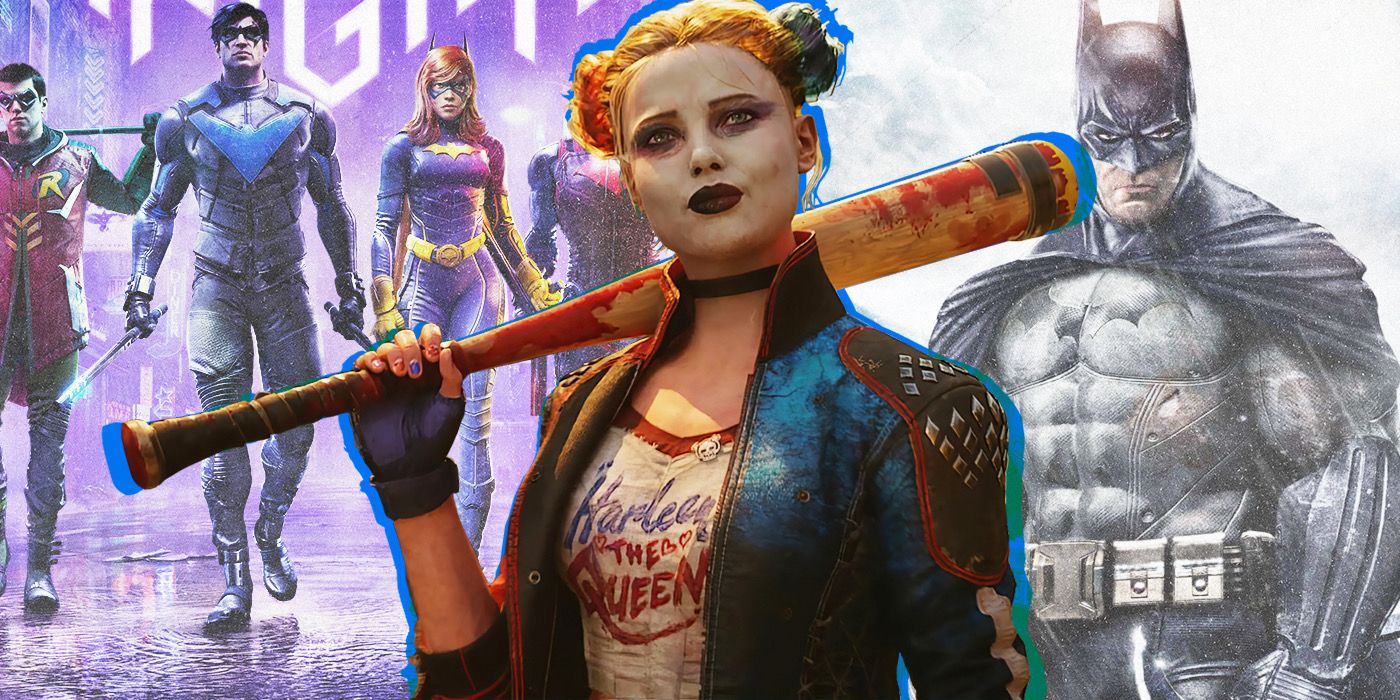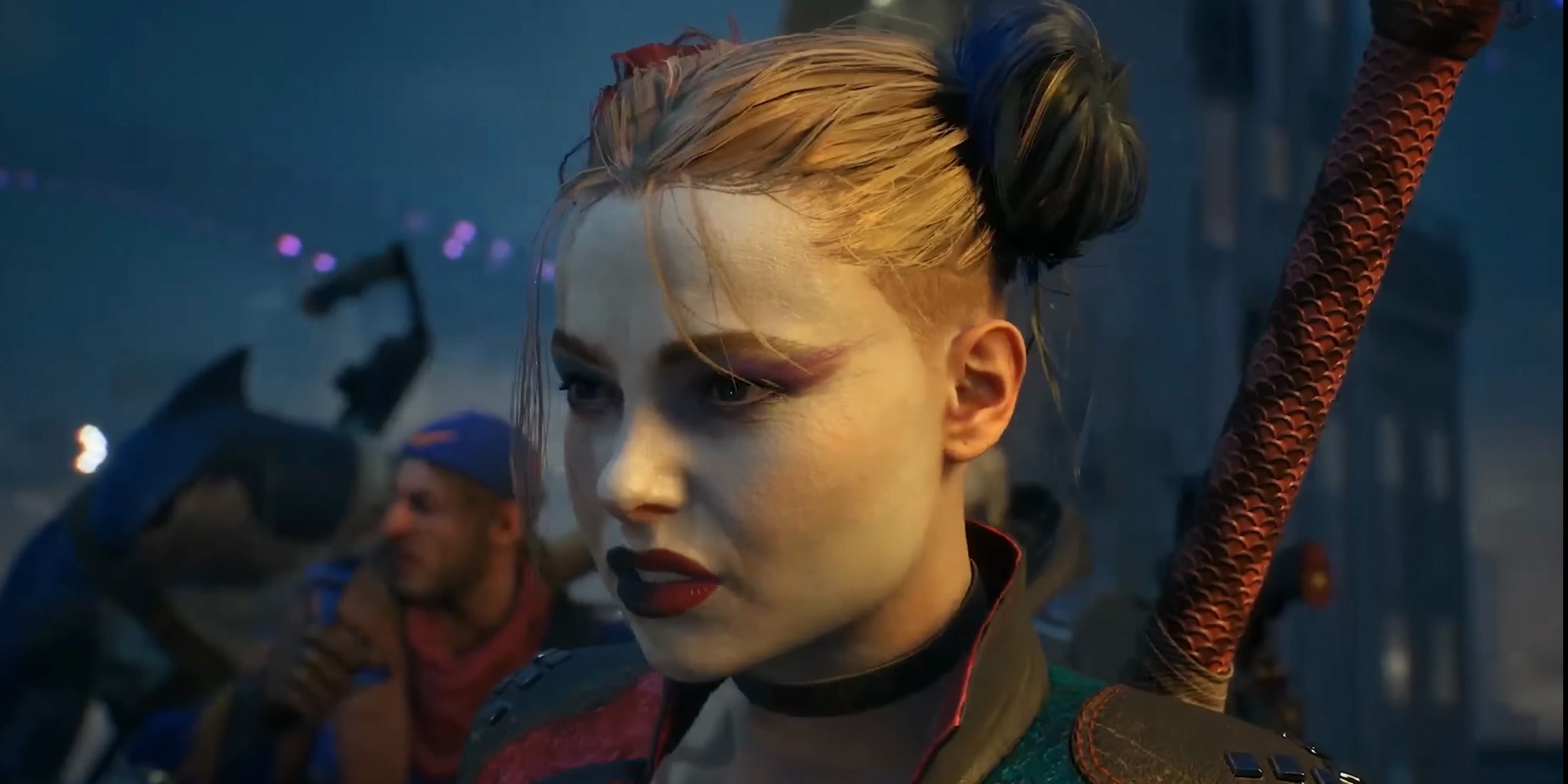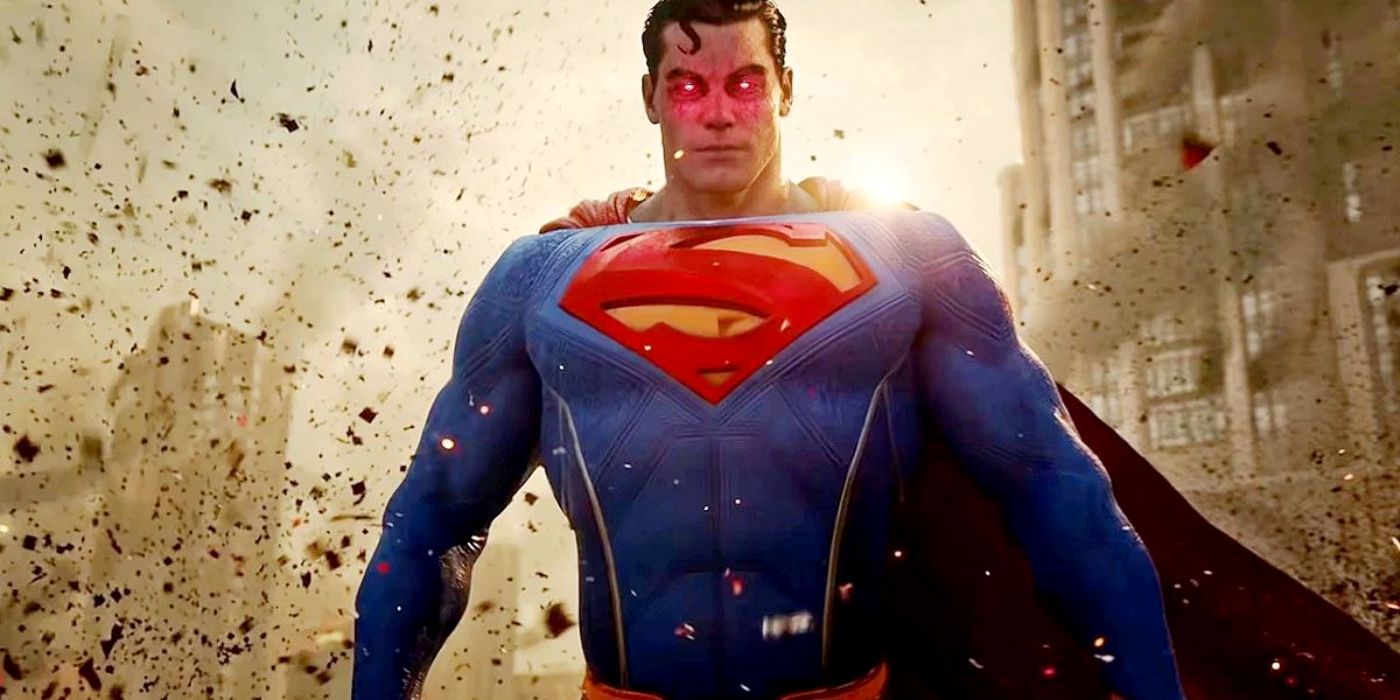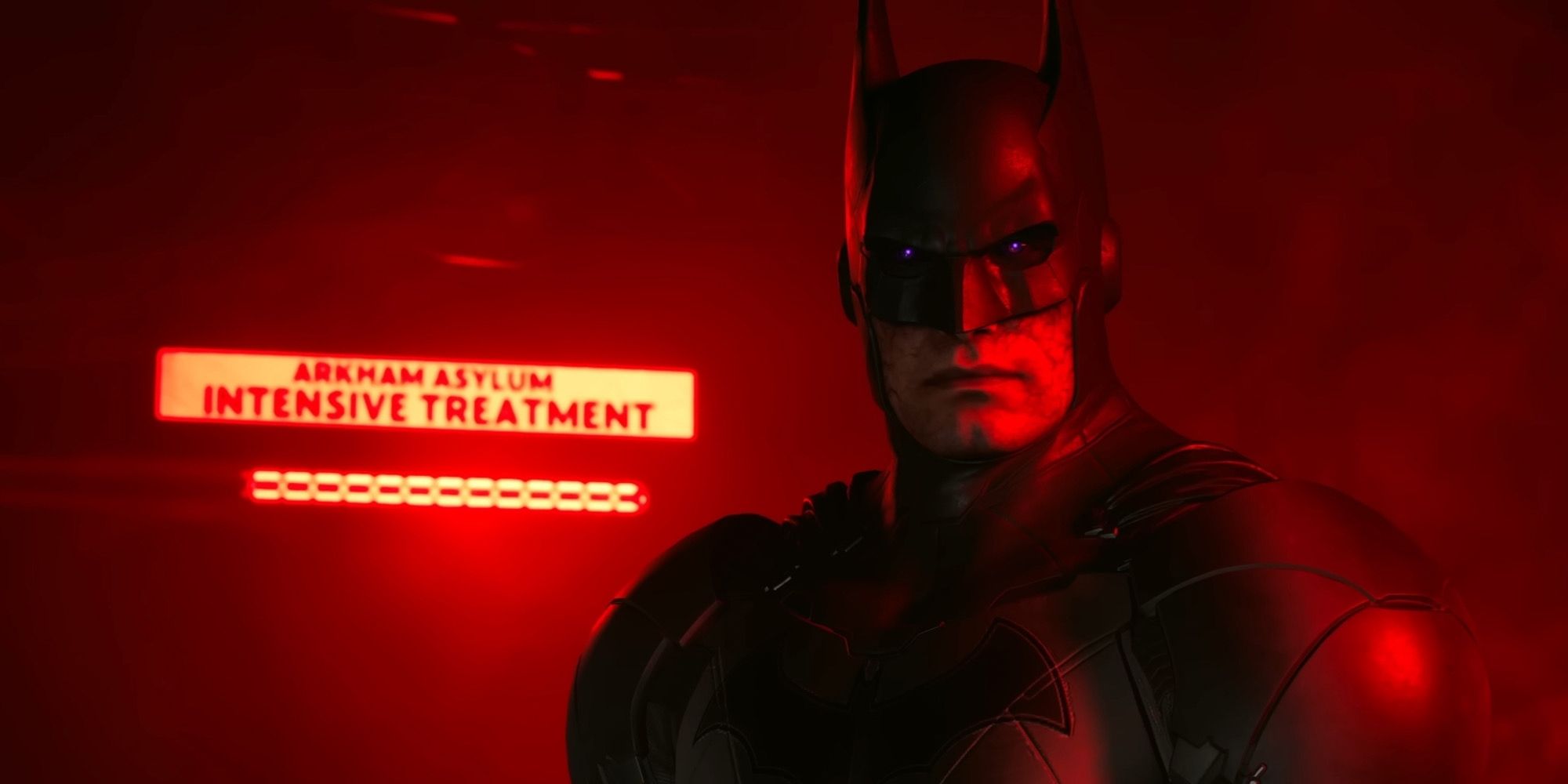Gamers were treated to an extended look at Rocksteady Studios' upcoming third-person action-adventure title Suicide Squad: Kill the Justice League at the PlayStation State of Play last week. The new reveal dives deeper into the game's story, focusing on the main antagonist, Brainiac, and his control over the titular Justice League and the city of Metropolis. The Suicide Squad is tasked with eliminating the Justice League to fight against Brainiac's control.
The trailer mostly shows Kill the Justice League's four-player co-op gameplay. The clip follows Harley Quinn, Deadshot, Captain Boomerang and King Shark as they run, jump and fly through a shared open world, guns blazing, taking down waves of foes while looting gear and upgrades. The new gameplay footage makes it apparent that Kill the Justice League has more in common with Gotham Knights than the critically acclaimed Batman: Arkham games Rocksteady Studios are known for -- and that's a bad sign.
Kill the Justice League Is Following in Gotham Knight's Footsteps
When it was announced that Gotham Knights would be an open-world action adventure featuring the Bat family, expectations were high, with fans unsurprisingly eliciting comparisons to Rocksteady's Arkham games from the very beginning. Gamers were expecting the next Batman: Arkham Knight: a compelling, grounded, character-driven superhero classic. But in the end, Gotham Knights turned out to be a shallow, watered-down imitation of an Arkham game. With repetitive combat and missions, generic bad guys, and hollow portrayals of beloved characters like Nightwing, Robin, Red Hood and Batgirl, its lukewarm reception was justified.
Suicide Squad: Kill The Justice League seems to be suffering from a similar problem. Harley, Deadshot, Captain Boomerang and King Shark don't seem to play very differently to each other, and they lack individuality in their movement and combat. They all float around the city using looted weapons with random stats that all fire in the same sort of way. There's very little here there that's uniquely defining to the way the characters engage in combat and traversal, making the gameplay look repetitive and uninspired. As the antiheroes mow down wave after wave of faceless, generic-looking bad guys, the gameplay loop leaves a lot to be desired.
Looter Gameplay Isn't a Good Addition to Kill the Justice League
Gotham Knights was hampered by its focus on RPG-like gearing and crafting that all revolved around looting randomly generated gear. The whole system felt unnecessary and added little-to-no substance to the game. If anything, it only served to complicate a game that already needed more development time in other areas. Done right, looter gameplay paired with a competent gear system can be a great addition to a game, but that clearly wasn't the case here.
In Gotham Knights, it felt like a somewhat cheap and manipulative way to create a habit-forming gameplay loop. Unfortunately, these systems in Gotham Knight aren't far off what Kill the Justice League is offering, with its battle pass and Games as a Service business model: a growing trend in gaming that the community are becoming increasingly unhappy with.
Rocksteady's Games as a Service Model May Be Detrimental
Developers make Games as a Service so they can continue to generate revenue from their games for years after their launch. Releasing multiple sets of DLC post-launch keeps players coming back, and loyal players are more likely to spend more money on the game. News of Rocksteady's adoption of this model for Kill the Justice League has left a bitter taste in fans' mouths.
From a studio's perspective, Games as a Service enable developers to support games for the long-term, with the continuous revenue stream enabling them to put more of their development resources into one game. From a consumer perspective, though, it can feel predatory -- like being made to pay more for less. Judging by previous Games as a Service that used this model and failed, this may not be the right direction for Rocksteady to be going.
Kill the Justice League's Potential Is Overshadowed by Bad Decisions
After the extended look at Kill the Justice League, it's clear the game seems to be following in the steps of Gotham Knight. Fans eagerly anticipating Rocksteady Studio's long-awaited follow-up were disappointed by what was shown at the State of Play, and this is no surprise: Suicide Squad looks, feels and plays like a massive departure from the type of games Rocksteady once excelled at making. This is especially concerning to fans of the Batman: Arkham series, as Rocksteady officially confirmed that Kill the Justice League is a canonical follow-up that takes place five years after Batman: Arkham Knight. Even the late Kevin Conroy reprises his role as Batman.
However, Suicide Squad: Kill the Justice League does have an intriguing, original premise, with villains playing the role of the protagonists, fighting against corrupted versions of the most powerful superheroes in comic book history. If done right, the game's overarching narrative could be its saving grace. The game has potential -- but given that it's already made similar missteps to Gotham Knight, as well as the fact that it's using a live service game business model, Suicide Squad: Kill the Justice League is in for an uphill battle.




